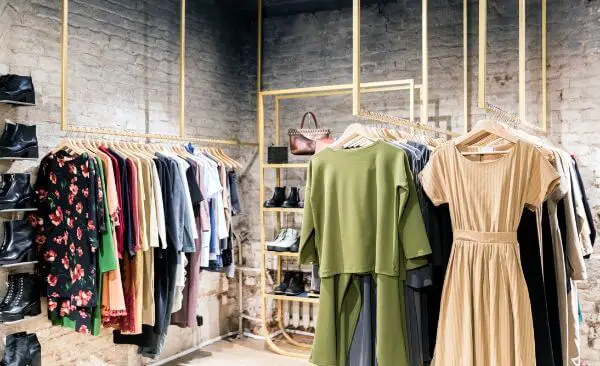
Greenwashing is what I’m talking about here. What it is, how to recognize it, and how to avoid falling for it.
I’m sure you’ve heard of the term “greenwashing.”
It’s becoming increasingly popular these days, which is fantastic because customers are becoming more conscious of how easy brands can trick them.
What is the meaning of the term “greenwashing”?
Definition of Greenwashing
Greenwashing is a marketing approach that companies employ to make people think they are doing more for the environment than they are.
According to a 2015 research, two-thirds of shoppers are willing to pay more for an environmentally friendly or sustainable product.
This is wonderful news for brands and companies that employ greenwashing as a marketing strategy since it implies we’ll spend more money or just buy more of the things they sell because they’re deemed sustainable or environmentally friendly.
While these programs are admirable, I don’t believe they’ll be of much use until these companies also decide to change their business models and cut the number of products they produce each year.
Some of these companies produce 3 billion clothes per year. 3 billion outfits that the majority of us do not require.
Greenwashing is a favourite activity of the fashion industry. Fast fashion brands, in particular.
If fast fashion is all that is currently available to you, you can still participate in sustainable and slow fashion. You can still make those purchases sustainable by selecting goods that you want to wear for an extended period of time.
Both in terms of personal flair and construction. And simply by looking after the clothes you bring home.
Because there is a lot of greenwashing in the fashion industry, I’m going to focus on the red flags that come to mind when I’m looking at brands and how I figure out if they’re responsible and align with slow fashion beliefs.
Signs of Greenwashing
Now let’s talk about the most common signs and examples of greenwashing.
Claims For Sustainability Aren’t Backed up by Evidence
If you go to a company’s website and see a bunch of incredibly vague but pleasant terms about slow fashion and sustainability, without anything to back those statements up, that’s one of the first signs that they’re greenwashing.
They don’t list factories, and they don’t say where their clothes are created.
When brands use these buzzword-y terms, it’s critical that they have data to back them up.
Getting in touch with the brand directly is one way to get around this. Send them an email, or call them out on Instagram if you like. Doing it in a courteous manner will always result in more responses.
There Are o Third-party Certifications Available
Looking for third-party certifications is a piece that might be useful when it comes to transparency.
They are not used by a number of fashion companies.
B Corporation, Fair Trade, OEKO-TEX 100, 1% For the Planet are just a few of the certifications available. T hese are all strong indicators that they must adhere to particular guidelines.
This isn’t, however, a one-size-fits-all solution. We must always be critical thinkers, but these certifications can be really beneficial.
The payment of membership fees is required for several of these certifications. Small firms may not be able to pay these certifications, so keep that in mind. Even yet, because they’re working on a smaller scale, they’re able to do things in a sustainable manner.
They don’t produce in large quantities, which is a little counter-intuitive to sustainability.
So, if you don’t want to get into the specifics of different types of materials and certifications, just look at the general business plan of the brand or company you’re considering.
Selling Clothes at Low Prices
When you think about it, selling clothes at such low prices isn’t a sustainable business strategy in and of itself.
Businesses that sell at such a low cost must sell in absurdly large volumes.
They also have to do so at the expense of their human labor by not adequately paying them.
Mentioning Standard Things
Another thing that brands have started doing is listing things that are very common yet are grouped together as sustainable practices.
Things like going paperless are examples. But it’s 2022, and unless you’re in law or another profession where paper paperwork is essential, who is not going paperless?
Things like this, which would have happened anyhow, are hardly an initiative by a brand to become more sustainable. They’re just scraping the bottom of the barrel for things to use to paint them in a brighter light.
Focusing on One Area of Sustainability
Another major piece of greenwashing that I have succumbed to is focusing on one area of sustainability while ignoring another equally vital area.
They place a great deal of emphasis on using recycled materials or organic cotton, for example. They don’t truly address another issue that is critical to long-term sustainability.
Are they paying social justice, equity, and a fair and living wage to their employees?
While no company will be perfect and check off every box, it is still deceptive to claim that your company is sustainable based on simply one deed.
Slow fashion is a highly comprehensive discipline because it recognizes that what you do here has an impact on what you do there.
As I previously stated, no one is flawless, but I really enjoy seeing brands call themselves out or at the very least acknowledge their flaws.
Encouragement of Excessive Consumption
Many companies are notorious for encouraging excessive consumption.
One thing I look for in a brand is whether or not it encourages excessive consumption.
When the same product is advertised on the website year after year, it indicates that there is no sense of urgency or scarcity to force the consumer to make a hasty purchase decision, which frequently leads in waste.
No Take Back Programs
Take back programs are another excellent example. Although an increasing number of brands are collecting used things, many still do not.
The more we can encourage each other to shop secondhand and keep clothes out of landfills, the better.
What’s more crucial to look for is whether or not this brand is using this initiative to get you to shop more.
For me, it’s always about the company’s production scale and size. It doesn’t matter whether their products are 100 percent sustainable or if they have the best take back program if they’re releasing new collections every week in enormous volumes.
Overproduction is overproduction, and it is not at all sustainable.
Things like selling refurbished products, lifetime guarantees, and other things that I like to see in connection with these take back programs are things that I like to see.
It informs me that brands are worried about their product’s end of life and that they are accountable for the things they produce.
It also indicates to me that they want their consumer to keep the piece for a long period.
That’s all I’ve got to say about greenwashing. I hope these pointers prompted you to think how and where you shop.



